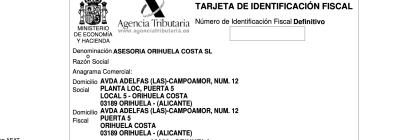What is the real cost of a worker in Spain?
When a company considers hiring staff, the first number that usually appears is the gross salary, however, that figure is only a part of the total cost that the company assumes. To what is agreed in payroll must be added contributions, insurance and other concepts that, together, can make a considerable difference.
Knowing the real cost of a worker is essential to properly plan the budget, avoid surprises and make strategic hiring decisions.
The gross salary: the starting point
The gross salary is the initial reference and corresponds to the total amount agreed before applying the personal income tax withholdings and the worker’s contributions to Social Security. An annual gross salary of twenty thousand euros, for example, does not reflect the money that the employee finally receives, since taxes and contributions are deducted from that amount. For its part, the company is not limited to paying those twenty thousand euros, but must add other mandatory expenses that are part of the total cost of having that person on staff.
Business contributions to Social Security
One of the most important items that the company assumes are Social Security contributions. These contributions cover concepts such as common contingencies, work accidents, unemployment, vocational training and the Wage Guarantee Fund.
Its amount is usually between thirty and thirty-two percent of the gross salary in an indefinite contract, although it can vary depending on the sector, the professional category or the collective agreement.
Thus, in the case of the salary of twenty thousand euros, the business contributions could be between six thousand and six thousand four hundred euros additional, which would raise the total cost to about twenty-six thousand euros per year.
Other costs associated with contracting
Beyond salary and contributions, there are other expenses that are not always taken into account but that are part of the real cost. Depending on the position and the sector, the company may be forced to assume training in occupational risk prevention, the performance of periodic medical examinations, the delivery of uniforms or personal protective equipment, as well as the provision of tools, software or office supplies.
Indirect costs and productivity
There are costs that do not appear on any invoice, but that also affect the final account. The time a worker needs to adapt to the position, initial training or absences for vacations, medical leave or paid leave are examples of these situations. During these periods, the company continues to pay salary and contributions, although productivity may be reduced. These factors, difficult to measure accurately, influence economic performance and must be taken into account when calculating the real cost.
Differences according to the type of contract
The contractual modality also has a significant influence. An indefinite contract usually involves stable contributions and, in the event of dismissal, higher compensation. Temporary contracts, on the other hand, apply a somewhat higher unemployment contribution rate and may generate recurring expenses for renewals or finalisations.
In some cases, such as the hiring of young workers, people with disabilities or older workers of a certain age, there are bonuses that reduce the business contribution, which modifies the total calculation.
Knowing these particularities well allows you to optimise the work structure without violating the regulations.
Practical example of calculation
If we take up the example of a worker with an indefinite contract and an annual gross salary of twenty thousand euros, we can estimate that the company contributions would mean about six thousand two hundred euros additional. To this would have to be added approximately eight hundred euros in expenses such as uniforms, training or medical examinations. In total, the company would be allocating about twenty-seven thousand euros per year to maintain that position.
This means that, for the worker to be economically profitable, his contribution must cover not only the salary that appears on his payroll, but also all the additional cost he generates.
Importance of calculating labour costs well
Ignoring the real cost of each worker can cause cash flow problems, especially in small and medium-sized companies, where margins are tighter.
Having a clear vision of this figure not only allows hiring decisions to be made with greater certainty, but also helps to negotiate salaries in a more transparent way.
Asesoria Orihuela Costa , we are your labour advisor
At Asesoría Orihuela Costa we help companies and freelancers to understand and optimise their labour costs, ensuring that each hiring is well planned and complies with all legal obligations.
Our approach combines technical rigour with a close deal, so that you know exactly how much a worker costs and how that cost fits into your business strategy. We take care of the management of payrolls, contracts, contributions and everything necessary for your company to grow with peace of mind.






